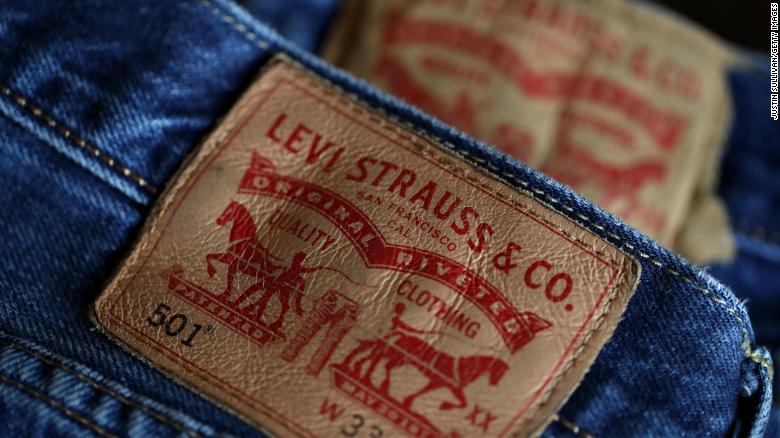Books & arts
來源于《圖書與藝術》版塊
Jean history
牛仔的歷史
How American denim conquered the world
美國牛仔是如何征服世界的
He was born in a Bavarian village in 1829, fleeing anti-Semitism with his family at 17. From New York he caught a steamer to California, a newly minted American citizen, with a view to expanding the family’s dry-goods business. But these were the heady days of the Gold Rush, and the young man dreamed of making it big. His initiative paid off so well that you may be wearing his invention now: his name was Levi Strauss.
他于1829年出生在巴伐利亞的一個村莊,17歲時隨家人逃離了反猶太主義。他在紐約搭上一艘汽船,前往新加入美國國籍的加州,目的是擴大家族的干貨生意。但那是淘金熱的日子,這個年輕人夢想著把它做大。他的倡議得到了很好的回報,你現在可能正穿著他的發明:他的名字是李維·斯特勞斯。

Technically, the entrepreneur who went by “Uncle Levi” didn’t invent the copper rivets on denim “waist overalls” that became his firm’s stock-in-trade. The idea came from a tailor in Nevada who bought cloth from Strauss to make work clothes for labourers. In 1872 Jacob Davis persuaded him to jointly file for a patent for an “improvement in fastening pocket openings”, and to shift from selling fabric to finished trousers. The rest is a history of marketing genius— documented in the largest-ever public display of artefacts from the Levi Strauss & Co. archive.
從技術上講,這位被稱為“李維大叔”的企業家并沒有發明牛仔“腰部工作服”上的銅鉚釘,而這種鉚釘正是利瓦伊公司的存貨。這個想法來自內華達州的一個裁縫,他從施特勞斯那里買了布給工人做工作服。1872年,雅各布·戴維斯說服他聯合申請了一項專利,以“提升口袋開口緊固性”,并從銷售布料轉向銷售成品褲子。剩下的就是營銷天才的歷史了——李維·斯特勞斯公司有史以來最大規模的文物公開展覽記錄了這段歷史。
“Levi Strauss: A History of American Style” at the Contemporary Jewish Museum in San Francisco deftly weaves together corporate, cultural and social trends to tell the story of one of the country’s most famous exports. When Strauss died in 1902 he was eulogised as one of San Francisco’s foremost philanthropists and a pillar of the Jewish community. Nobody could have anticipated that the firm he bequeathed to four nephews would define America’s style and become a global juggernaut. It did that by cannily roping its product to two mythic American figures: the cowboy and the rebel.
舊金山當代猶太博物館的《李維·斯特勞斯:美國風格的歷史》巧妙地將企業、文化和社會趨勢編織在一起,講述了這個國家最著名的出口商品之一的故事。施特勞斯于1902年逝世,他被譽為舊金山最重要的慈善家之一和猶太社區的支柱。沒有人能預料到他留給四個侄子的公司會定義美國的風格并成為全球巨頭。李維斯公司做到了,通過巧妙地將自己的產品與兩個美國神話人物——牛仔和反叛者——聯系在一起。
Levi’s 501jeans were tough. The oldest pair on display dates to 1890; another was used to tow a car. Marketed originally to farmers, mechanics and miners, they became the garb of choice for Western horsemen. It wasn’t long before John Wayne and Clark Gable were wearing them into the sunset, followed by glamorous hoodlums played by Marlon Brando and James Dean.
李維斯的501牛仔褲很結實。展出的最古老的一條牛仔褲腿可追溯到1890年;另一條腿當時用來拖汽車。牛仔衣物最初的目標客戶是農民、機械師和礦工,后來成為了西方騎兵的首選服裝。沒過多久,著名美國演員約翰·韋恩和克拉克·蓋博就穿著牛仔看日落了,接著是馬龍·白蘭度和詹姆斯·迪恩扮演的迷人的流氓。
The brand’s advertising rode the countercultural wave, capitalising on its status as a badge of coolness and freedom. Marilyn Monroe wore Levi’s; Andy Warhol immortalised them. Even Albert Einstein was spotted in a Levi’s bomber jacket. Jeans that graced the haunches of the famous—including Patti Smith, Madonna and Beyoncé—fill the gallery and span the decades.
該品牌的廣告乘著反文化浪潮,利用其酷和自由象征的地位象征。瑪麗蓮·夢露穿過李維斯;安迪·沃霍爾使其成為經典。甚至有人看到阿爾伯特·愛因斯坦穿著李維斯的短夾克。很多名人都穿過李維斯的牛仔褲——包括帕蒂·史密斯、麥當娜和碧昂絲——這些牛仔褲擺滿了畫廊跨越了幾十年的而時間跨度。
At any given moment a big chunk of humanity is wearing blue jeans, the show’s curators observe. Levi’s have been coveted behind the Iron Curtain and fetishised in Japan; they have been ripped, embroidered and covered in ink. Not too shabby for a kid from Bavaria.
展覽的策展人發現,在任何時候,都有一大塊人穿著藍色牛仔褲。李維斯在鐵幕后備受關注,在日本也受到追捧;牛仔褲做成破洞、繡上花、還被墨水覆蓋。對于一個來自巴伐利亞州的孩子來說,這不算太寒酸。
譯文由可可原創,僅供學習交流使用,未經許可請勿轉載。











